Tom Kepler's Blog, page 42
July 27, 2011
The Stone Dragon: moving toward publication
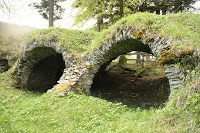 "I didn't just read the first three chapters of your book, I DEVOURED them."
"I didn't just read the first three chapters of your book, I DEVOURED them."
--www.hopelessbibliophile.com
I kept dithering: Should I publish The Stone Dragon through my own company, Wise Moon Books? Should I continue seeking an agent or another independent publisher?
Finally, the reasons and possibilities focused to these:
I want The Stone Dragon available to students and community now.I want a book that represents me as a writer now. So it appears the now's have it: The Stone Dragon will be out this fall.
Here are some recent accomplishments:
The book block is 80% ready to upload to the printer at Lightning Source International. The process is moving about 3X faster than last time. I've learned quite a bit about Adobe InDesign (but still know so little!). I'm meeting with a beta reader today for some last input. Then it's on to the details of attention that make the book look professional.The cover template for the book cover will be available soon.Suzanne Bonneford, French photographer, has sent me two photographs (jpgs) for use.Advance "rave" review quotations are being collected from writers and book blog reviewers for the back cover and inside first page.ISBN--yes.Copyright registration--been through the process twice already. Amazon "Look Inside": familiar with the process.Kindle and Smashwords ebooks?--have established sites. "And appreciation always to my wife Sandy, who kept reminding me that this would be a good project to finish."
The above is part of my acknowledgements for the book. Yes, thanks to all. It will be good to be able to hold a copy of The Stone Dragon in my hand.
Copyright 2011 by Thomas L. Kepler, all rights reserved
Published on July 27, 2011 04:39
July 21, 2011
Movie Review: Harry Potter and the Deathly Hallows: Part 2
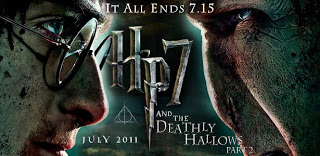
This is the first blockbuster movie this summer that I can say I really liked.
Harry Potter and the Deathly Hallows: Part 2 provides satisfying closure to the Harry Potter Series, the seven novels and eight movies. The movie starts right at the end of Hallows, Part 1 with no backfill, which is fine, and the three or so viewers in the world who walk into the theater not having read the books or seen the movies will just have to deal with it.
Here are three reasons why the movie is a fitting ending to the Harry Potter series:
The panorama effect: Hallows 2 subtly provides perspective. The novel Harry Potter and the Sorcerer's Stone (Philosopher's Stone in the UK) was published fourteen years ago in 1997. The movie provides visual flashbacks of the principal actors from those years--from the movies--and those younger faces emphasize the journey that Rowling's novels and the movies have taken us on--from children's movies to the showdown between good and evil.The special effects: The movie magic does not overshadow the storyline's magic--rather, it enhances. We see lots of epic magic in this concluding movie, but the visual effects never leave the story behind and just become ooohh and awwww moments for themselves. I wish the same could be said for Transformers 3. Voldemort comes out of the closet: Lord Voldemort is a presence in all the books and movies, but in Hallows 2 he becomes more than a lurking presence or a fleeting figure with a few lines. Scripting, directing, and the acting for Voldemort had to be spot-on, or he would be seen as unbelievably two-dimensional or as buffoonish. And all I can say is "Great job!" Actor Ralph Fiennes creates a character that is both powerful evil sorcerer Lord Voldemort and also Tom Riddle, the incomplete personality that crows and preens before his follows at his moment of triumph. Giving full, three dimensional presence to Voldemort's character validates Harry Potter's epic struggle--and also the audience's journey through seven books and eight movies. (I have to add that Alan Rickman as Professor Snape provides a character with truly poignant dimensions--a loving, embittered, complex individual.)The "19 Years Later" ending was somewhat funny in the novel and even brought a chuckle from someone in the audience in the cinema. It's OK, though--the epic adventure must return to everyday life, according to archetypal story patterns, and what better way than introducing the next generation.
Who knows? Maybe Rowling will take up an unbelievably large challenge and go for a Harry Potter, Jr., series! That would be one brave writer.
Published on July 21, 2011 04:49
July 19, 2011
Being Weird
 "That's weird."
"That's weird."The person talking to me was commenting on the young college student who had been standing on the sidewalk for ten minutes intently watching the sun rise.
"It is unusual," I agreed in passing, on my way to work.
Later that day, I saw that person again and continued the morning's conversation.
"I've been thinking about the guy who was staring at the sun this morning. That was eccentric or unusual, wasn't it?"
"Yep, sure was."
"What I was thinking was that in almost any college campus town on a Saturday night, we'd see some young person sitting on the sidewalk, staring down at the concrete, too drunk to speak or walk. If we watched long enough, we might even see that student throw up."
"That's true. Not uncommon."
"That's my point. We might say, 'How gross!' or 'Disgusting!' but we wouldn't find it unusual. How sad that such behavior is accepted as common."
I had the person's attention now, and I think I'd made my point.
Weird comes in different packages. Unusual or eccentric isn't necessarily a bad thing. Be tolerant, folks.
My son works for a grocery story that is right next to a state university. They recently expanded their beer walk-in cooler. The store will sell $12,000 worth of alcohol in a week.
My wife and I were recently in California, and coming back to our motel after having been to the cinema, as we slowed to turn into the parking lot, a man on the corner starting walking toward us. There was something wrong with the man, the way he moved, the look in his eyes: dangerous, unstable. In my opinion, he was either psychotic, drunk out of his mind, on drugs, or a combination of those possibilities. I told my wife to not be surprised if we kept moving and didn't stop near the man.
Odd takes many forms. Let's allow and be accepting of life-supporting eccentricities. We've probably got a few ourselves.
Let's be understanding and sympathetic of those oddities that arise from behaviors that are life-destructive. Just be careful about getting out of the car.
Writer D.H. Lawrence said that one does not worship the sun by wallowing in it.
Balance in life is generally considered to be healthy. But if one must engage in unbalanced behavior, I'd rather pass by someone consuming a large amount of sunrise than a large amount of tequila sunrise.
Call it a bias for sustainable living, or call it odd--but that's the way I feel.
Copyright 2011, by Thomas L. Kepler, all rights reserved
Published on July 19, 2011 07:46
July 17, 2011
Book Review--The River of Doubt: Theodore Roosevelt's Darkest Journey
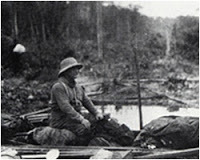 Theodore Roosevelt, after two terms as president of the United States, runs for a third term on the maverick Progressive Party (Bull Moose) ticket. He loses in a lopsided victory to Wilson and is at loose ends politically and personally.
Theodore Roosevelt, after two terms as president of the United States, runs for a third term on the maverick Progressive Party (Bull Moose) ticket. He loses in a lopsided victory to Wilson and is at loose ends politically and personally.An avid outdoorsman and accomplished amateur naturalist, Roosevelt agrees to an expedition to gather specimens for the American Museum of Natural History, heading a party that includes several accomplished naturalists--and joined by Brazilian explorer and soldier Colonel Candido Rondon and Roosevelt's son Kermit, an engineer in Brazil. The safely planned expedition morphs into a trip down an unexplored river, the River of Doubt, with great dangers, lack of expert preparation, and liabilities of personnel.
Author Candice Millard chronicles this expedition in The River of Doubt: Theodore Roosevelt's Darkest Journey, taking journals, reports, diaries, and interviews and transforming them into an account that is half journalistic and half research-based narration--a great balance of dramatic story-telling and objective non-fiction.
I read this account with a concurrent reading of Roosevelt's Through the Brazilian Wilderness , his account of the expedition, downloaded for free from Project Gutenberg to my e-reader.
From Through the Brazilian Wilderness:
"On February 27, 1914, shortly after midday, we started down the River of Doubt into the unknown. We were quite uncertain whether after a week we should find ourselves in the Gy-Parana, or after six weeks in the Madiera, or after three months we knew not where. That was why the river was rightly christened the Duvida."Switching from book to book and seeing events through both Roosevelt's eyes and Millard's research was a rich reading experience: Roosevelt's straightforward statements such as that he gave away his last spare pairs of shoes and pants to expedition members, and Millard's careful explanation of why shoes would rot away in the jungle and pants be ripped to shreds.
In The River of Doubt, Millard narrates:
"Roosevelt watched as the jungle glided past him, its towering trees and blue sky reflected, like a trembling, inverted world, in the water's dark surface. He drank in the rich array of beauty, admiring the many-colored butterflies that 'fluttered over the river,' and marveling at how the spark of sunlight could cloak the electric green jungle."Such a synthesis of direct quotation, paraphrase from original texts, and creative investment of background geographical knowledge provides a fascinating reconstruction of the Roosevelt-Roncon expedition.
To quote from the book's back cover:
". . . Roosevelt and his men faced an unbelievable series of hardships, losing their canoes and supplies to punishing whitewater rapids, and enduring starvation, Indian attack, disease, drowning, and a murder within their own ranks. Three men died, and Roosevelt was brought to the brink of suicide."Reading Roosevelt's Through the Brazilian Wilderness concurrently with The River of Doubt provides a useful balance to Millard's narrative. Roosevelt's account is presented in an objective tone, seeking scientific distance rather than drama. Insights into Roosevelt's character are gained from reading his account of the expedition. His account ends, for instance, with an itemization of the food, clothing, and exploration and scientific equipment taken on the journey.
It is Millard's account of the expedition and its historical context that really provides a full understanding of Roosevelt's journey into the wilderness. By accessing the journals of the other members of the expedition and by providing background information that fully informs the reader of the dangers of the journey (in contrast to Roosevelt's account which focuses the naturalist's perspective), a more complete picture of this expedition at the 20th century's beginning can be appreciated.
In Through the Brazilian Wilderness, Roosevelt writes: "The true wilderness wanderer . . . must be a man of action as well as of observation. He must have the heart and the body to do and to endure, no less than the eye to see and the brain to note and record."
Roosevelt was an American president who had these qualities, even at the end of his presidential term of office. Could something of this nature be accomplished nowadays by an American president after leaving office? Who knows? Perhaps we will be surprised.
In the meantime, we can read about the true exploits of Teddy Roosevelt, man of his times, American president, and wilderness wanderer.
Copyright 2011 by Thomas L. Kepler, all rights reserved
Published on July 17, 2011 17:30
July 12, 2011
Three Summer Movie Reviews: Green Lantern, X-Men: First Class, Transformers 3
I'm reviewing these movies in the order that I saw them. I enjoyed all three movies, but also found them easy to forget. Enjoy the movies, then move on.
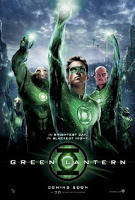 The Green Lantern
The Green Lantern
I suppose the main weakness of this movie is that I experienced the same conflict as the main character--wrapping my head around the idea of a cosmic police force, headed by the Guardians, that doesn't seem to be too smart.
Ryan Reynolds did a good job as the Green Lantern. His performance was balanced and credible, using his talent for comedy without overshadowing the storyline or the integrity of his character.
The great performance of the movie was the tragic bad guy, Hector Hammond, played by Peter Sarsgaard. You pity the character Hector and want him to make a choice, turn a corner, face the light. Sarsgaard's characterization provides those poised moments when we ask, "How's he going to choose?"
Enjoy the character development. There are plenty of other summer flicks where many things blow up for an extended time.
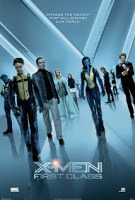 X-Men: First Class (2011)
X-Men: First Class (2011)
The movie is tight and moves along without a glitch. The acting is believable, especially that of James McAvoy as Xavier and Kevin Bacon as Sebastian Shaw.
This was an enjoyable movie to watch. My main disappointment was that the movie was so predictable, and I'm not just talking about the fact that a lot of the storyline exists as backstory in the first three movies.
Nazis = bad; democracy = good. People under 30 = good; the establishment = deceitful. The movie did a good job with the conflicts but somehow never went beyond them.
The fact that my favorite part of the movie was the three-second moment with Hugh Jackson playing Wolverine tells me something. Those few seconds were unexpected, high profile creativity. The rest of the movie was predictable, technically proficient creativity.
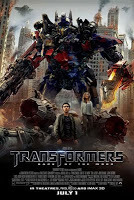 Transformers: Dark of the Moon
Transformers: Dark of the Moon
The human/special effects interface was a strain for me. How could someone get through a particular experience and live, much less be uninjured? It reminds me of the movie 2012. The hero (John Cusack) races along in various scenes, the roadway falling away three feet behind the vehicle into a thousand foot chasm. Man, limousines and RVs must have better suspension and acceleration than I thought!
It's like that in Transformers: Dark of the Moon. Let me give you an example (very slight spoiler). A skyscraper is cut in half, falling onto another skyscraper. Glass breaking, furniture falling, a half dozen heroes tumbling. Epps (Tyrese Gibson) says, "Everybody OK?" And by golly they are! The girlfriend's white blouse didn't even get dirty. Another example: Witwicky is whipped around on a cable--no dislocated arms, not smashed by contact with large metal transforming objects or walls. Ah, youth!
After watching the movie, I was surprised that the comments of actor Shia LaBeouf (that I'd heard in an interview that I'd seen prior to watching the movie) were so far off. He said that this movie really had the cast at their best and they really did their jobs well.
What does that mean? That LaBeouf ran faster than in the other movies?
Character development in this movie was almost non-existent. Continuing characters maintained a flat presence. Several weird characters were thrown in for apparent flash. The girlfriend is evidently just some hot rich girl that main character Sam Witwicky hooks up with after his other hot girlfriend dumps him. Disappointing.
High points:
actor John Turturro as Simmons, quasi-psycho g-manactress Frances McDormand as Mearing, blue-suited, bureaucratic bitchLeonard Nimoy as Sentinel Prime's voiceThese three actors--Turturro, McDormand, and Nimoy--provided unexpected depths to characters in a movie that allowed action to thin other characters to two-dimensional representations.
One image that was a hoot: Mom and Dad Witwicky (Kevin Dunn and Julie White) in green satin jumpsuits standing outside their RV in downtown Chicago. (No promo photo available--rats!)
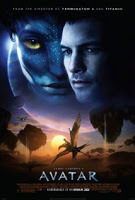 Final words:
Final words:
Watch the movies and enjoy, but don't expect a life-transforming (if you'll forgive the pun) experience. The one unique twist to my watching these three movies is that I saw The Green Lantern in 3-D. An interesting experience, even though a few heads achieve gorilloid proportions.
Given the choice, though, I'd prefer to see Avatar for the second time in 3-D. I'd enjoy the new perspective.
 The Green Lantern
The Green Lantern
A test pilot is granted a mystical green ring that bestows him with otherworldly powers, as well as membership into an intergalactic squadron tasked with keeping peace within the universe. (IMDb)This movie was slammed for too much character development because the action confrontation doesn't come until the end of the movie. However, to be contrary, I liked the character development. The movie's main conflict is the inner conflict of the main character--that of understanding himself and accepting his new role in life.
I suppose the main weakness of this movie is that I experienced the same conflict as the main character--wrapping my head around the idea of a cosmic police force, headed by the Guardians, that doesn't seem to be too smart.
Ryan Reynolds did a good job as the Green Lantern. His performance was balanced and credible, using his talent for comedy without overshadowing the storyline or the integrity of his character.
The great performance of the movie was the tragic bad guy, Hector Hammond, played by Peter Sarsgaard. You pity the character Hector and want him to make a choice, turn a corner, face the light. Sarsgaard's characterization provides those poised moments when we ask, "How's he going to choose?"
Enjoy the character development. There are plenty of other summer flicks where many things blow up for an extended time.
 X-Men: First Class (2011)
X-Men: First Class (2011)Before Charles Xavier and Erik Lensherr took the names Professor X and Magneto, they were two young men discovering their powers for the first time. Before they were archenemies, they were closest of friends, working together, with other Mutants (some familiar, some new), to stop the greatest threat the world has ever known. In the process, a rift between them opened, which began the eternal war between Magneto's Brotherhood and Professor X's X-MEN. Written by Twentieth Century FoxThis movie I might buy just to fill out my X-Men movie archive. But I probably won't.
The movie is tight and moves along without a glitch. The acting is believable, especially that of James McAvoy as Xavier and Kevin Bacon as Sebastian Shaw.
This was an enjoyable movie to watch. My main disappointment was that the movie was so predictable, and I'm not just talking about the fact that a lot of the storyline exists as backstory in the first three movies.
Nazis = bad; democracy = good. People under 30 = good; the establishment = deceitful. The movie did a good job with the conflicts but somehow never went beyond them.
The fact that my favorite part of the movie was the three-second moment with Hugh Jackson playing Wolverine tells me something. Those few seconds were unexpected, high profile creativity. The rest of the movie was predictable, technically proficient creativity.
 Transformers: Dark of the Moon
Transformers: Dark of the Moon
The Autobots learn of a Cybertronian spacecraft hidden on the Moon, and race against the Decepticons to reach it and to learn its secrets. (IMDb)Short evaluation: 20% dialogue; 80% let's blow something up.
The human/special effects interface was a strain for me. How could someone get through a particular experience and live, much less be uninjured? It reminds me of the movie 2012. The hero (John Cusack) races along in various scenes, the roadway falling away three feet behind the vehicle into a thousand foot chasm. Man, limousines and RVs must have better suspension and acceleration than I thought!
It's like that in Transformers: Dark of the Moon. Let me give you an example (very slight spoiler). A skyscraper is cut in half, falling onto another skyscraper. Glass breaking, furniture falling, a half dozen heroes tumbling. Epps (Tyrese Gibson) says, "Everybody OK?" And by golly they are! The girlfriend's white blouse didn't even get dirty. Another example: Witwicky is whipped around on a cable--no dislocated arms, not smashed by contact with large metal transforming objects or walls. Ah, youth!
After watching the movie, I was surprised that the comments of actor Shia LaBeouf (that I'd heard in an interview that I'd seen prior to watching the movie) were so far off. He said that this movie really had the cast at their best and they really did their jobs well.
What does that mean? That LaBeouf ran faster than in the other movies?
Character development in this movie was almost non-existent. Continuing characters maintained a flat presence. Several weird characters were thrown in for apparent flash. The girlfriend is evidently just some hot rich girl that main character Sam Witwicky hooks up with after his other hot girlfriend dumps him. Disappointing.
High points:
actor John Turturro as Simmons, quasi-psycho g-manactress Frances McDormand as Mearing, blue-suited, bureaucratic bitchLeonard Nimoy as Sentinel Prime's voiceThese three actors--Turturro, McDormand, and Nimoy--provided unexpected depths to characters in a movie that allowed action to thin other characters to two-dimensional representations.
One image that was a hoot: Mom and Dad Witwicky (Kevin Dunn and Julie White) in green satin jumpsuits standing outside their RV in downtown Chicago. (No promo photo available--rats!)
 Final words:
Final words: Watch the movies and enjoy, but don't expect a life-transforming (if you'll forgive the pun) experience. The one unique twist to my watching these three movies is that I saw The Green Lantern in 3-D. An interesting experience, even though a few heads achieve gorilloid proportions.
Given the choice, though, I'd prefer to see Avatar for the second time in 3-D. I'd enjoy the new perspective.
Published on July 12, 2011 08:06
July 10, 2011
My Dad's 91st Birthday: Some Photos
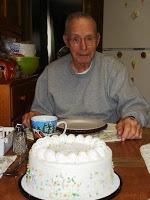 My dad says this about his health: "I'm in pretty good condition, considering the condition I'm in."
My dad says this about his health: "I'm in pretty good condition, considering the condition I'm in."He mentions more often nowadays, "I'm getting older," and then added on this visit, "I don't know how much longer I'm going to be around."
I replied, "Sandy and I've talked about that, and then we realized we've been wondering that for about ten years now, and you're still here."
Dad smiled.
He was born June 28, 1920. When I think of all he has experienced, I am amazed.
It was good to visit my family on Dad's 91st birthday. Mom had been bit by a spider and wasn't feeling well; in fact, she was given antibiotics by the doctor. My brother Pat stays with Mom and Dad and makes sure they're OK. He's my hero.
Sandy and I stayed in an inexpensive motel and visited Dad and Mom about 4-5 hours every day--usually until a couple of hours after lunch when they fell asleep. That way we got a chance to visit, but their routine and rest weren't disrupted.

Early every morning we would take an hour walk along the Feather River, about a quarter mile from the motel.
Happy birthday, Dad!
Published on July 10, 2011 16:57
July 5, 2011
A 4th of July Public Library Celebration
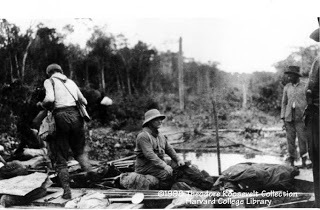 Teddy Roosevelt in Brazil's Amazon I spent the 4th of July, the USA's independence day celebration, traveling by plane, so I decided to celebrate today, July 5, by visiting the public library.
Teddy Roosevelt in Brazil's Amazon I spent the 4th of July, the USA's independence day celebration, traveling by plane, so I decided to celebrate today, July 5, by visiting the public library.It was such a joy to walk into the public library with no idea what books I was going to borrow--what genre or how many, virtually limitless possibilities.
Free public libraries are truly both the foundation and the gift of a free and open society.
Many Americans have educated themselves at a public library, and many folks pursue "continuing education" at the local public library. American author Jack London was one such.
From website The Straight Dope, an article entitled "How Did the Public Library Get Started?" states that Benjamin Franklin started a lending library in 1731 with his "subscription library," a company in which one could buy stock--the perk being you could borrow books.
The article defines a public library using the following criteria:
Is publicly owned and supported by taxes;Is open to any citizen who desires to use it, andContains a wide range of material, both popular and scholarly.According to The Straight Dope article, three lending trends eventually led to public libraries:
social libraries (mostly funded by donations)circulating libraries (rental)school district (for students)The article continues:
The Boston Public Library opened in 1854, and is usually considered the "real" first public library--that is, intentionally founded, not a happy accident. Its statement of purpose basically says: There's a close linkage between knowledge and right thinking;The future of democracy is contingent on an educated citizenry;There's a strong correlation between the public library movement and public education; andEvery citizen has the right of free access to community-owned resources.I find this evolution mirrored at our local public library by its loaning of videos/dvds. First one could buy them, rent them, or borrow them from friends. Then they came to the public library. Interesting, hm? I'm not so sure, though, if there is a correlation between watching dvds and "right thinking."
So what did I borrow to celebrate our nation's independence day? "A wide range of material, both popular and scholarly."
The River of Doubt: Theodore Roosevelt's Darkest Journey, by Candice Millard. (After losing the presidential election, Roosevelt heads up an uncharted tributary of the Amazon River. I read a National Geographic article on this and found it fascinating.)Two Robert Ludlum Bourne Series knockoffs by author Eric Van Lustbader. (I want to see how well he follows Ludlum's lead--although, to be honest, Ludlum's series is somewhat dated by now.)Facebook: the Missing Manual, by E.A. Vander Veer. "The book that should have come with the site." (2nd edition in 2010. It'll be interesting to see if this is any use at all for someone who's been using the site for a while.)Resolution, by Robert B. Parker, the Spenser detective novelist. (I've read Appaloosa, the first novel of this western genre series. Parker is usually a fast, entertaining read.)Larry Turtledove: Worldwar: in the Balance. "An alternative history of alien invasion." (Turtledove is an interesting writer. In this series, during WWII, the Nazis, Communists, Japanese, Americans--you get the idea--all stop bashing each other so that they can bash the aliens, who happen to be 3-foot, technologically advanced reptiles. Just weird enough to be interesting.)Now I'll just have to decide what to read first. At least this July 5, I have the freedom to make that decision myself.
Funnily and contrarily enough, I think I might just read Roosevelt's story of his adventure-- Through the Brazilian Wilderness , as a free ebook on my nook e-reader--then maybe check out Millard's perspective.
Ain't freedom great!
Copyright 2011 by Thomas L. Kepler, all rights reserved
Published on July 05, 2011 14:17
July 2, 2011
Social Network Friends: Would You Die for Your Friends?
 "How many friends do you have?" I remember Uncle Jim asking me when I was sixteen years old.
"How many friends do you have?" I remember Uncle Jim asking me when I was sixteen years old."Oh, I don't know. A couple hundred."
"That's dangerous."
"What do you mean?"
"Well, a friend is someone you'd die for. So you're willing to die for a couple hundred people? That sounds dangerous to me."
*
That was the point in my life when I learned the difference between the words friend and acquaintance.
I used to teach a unit at school about circles of intimacy.SelfFamilyFriendsAcquaintancesStrangersThese layers of intimacy were placed in concentric circles, with self placed at the center. Family and friends can be somewhat fluid--some family members not at all close to one, and some friends achieving that status of "family."
Many of those we may class as friends may actually be acquaintances--people we spend time with and whose company we appreciate and enjoy, but someone whose interactions with us only go so deep, that is to say, not very.
Some friends nowadays may even be strangers, especially with the internet.
Friends, people who like you, connections, followers: there are probably buzz words I'm missing, but these words all relate to individuals who have clicked an online icon, and who have created a link with you in the virtual world.
I am not saying that one cannot meet and get to know someone online. I even have a friend who first met his wife online, via a virtual game. (I wonder if once they were married, she continued to virtually "kill" him.) But if friendship derives from shared experience, then I believe face-to-face contact is an essential ingredient of a fully developed friendship.
My son, when still in his teens, said he had friends online that he had gotten to know by playing World of Warcraft. Our suggestion from home was to keep separate virtual friendships from face-to-face friendships--and that perhaps one day virtual friends could or would become actual friends. No dice, didn't scan.
I traded books with an online friend. Her book contained a variety of errors (such as heal instead of heel, and woe instead of whoa), and I was planning on sending her a private email, suggesting that she spend more time on the novel and then upload a new version of the ebook and paper version. Meanwhile, she read my novel, thought the realism was too gritty, too suggestive to young readers and might give them ideas--and posted a "one star" review. My wife reminded me of my conversation with my son. Yes, I had fallen for the idea that my online "friend" was really someone I knew. Naivete, thy name is social networker.
Bloggers who regularly receive and review books, of course, have a professional obligation to honesty. They usually state that in their blog's "submission" section. Their relationship of reviewer and author/publisher is professional, not personal.
Does that differ from an individual that one is connected to? The answer is, I suppose, utimately yes and no. Poet Lyn Lifshin adds about 10-20 friends to her Facebook personal account each day. As of this writing, she had 3890 friends, one of them me. Local Poet Rustin Larson has 686 members in his radio show Facebook group Irving Toast, Poetry Ghost, and 506 members in his Facebook group named after his most recent poetry book, The Wine-Dark House. Those members probably contain individuals in all those circles of intimacy.
My advice for myself is to use the word acquaintance instead of all the other words that the social networks use to market themselves. I'm comfortable with acquaintance. Let me say it again: acquaintance. Someone I've met and occasionally spend time with. Someone whom I sometimes help, and who sometimes helps me. Someone whom I might someday get to know better--who may, someday, call me friend--whom one day I might call friend. Or, to quote my uncle: be placed on that precious list of someone we'd be willing to die for.
Copyright 2011 by Thomas L. Kepler, all rights reserved
Published on July 02, 2011 08:20
June 30, 2011
Practical Tips for Writers--one writer's response
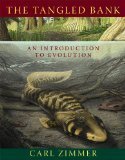
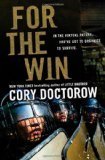
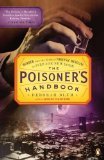 Steve Silberman at PLOS Blogs/Neuro Tribes posted the article "Practical Tips on Writing a Book
Steve Silberman at PLOS Blogs/Neuro Tribes posted the article "Practical Tips on Writing a Book  from 23 Brilliant Authors," which pretty much says what it is--although, for
from 23 Brilliant Authors," which pretty much says what it is--although, for  journalistic clarity, brilliant must necessarily be deemed editorial opinion.
journalistic clarity, brilliant must necessarily be deemed editorial opinion. 
A long introduction by Silberman then leads to the writing tips. Here are some snippets. Check out the article for full responses.
Carl Zimmer ( The Tangled Bank
 ): research, organize, amputateDavid Shenk (The Genius in All of Us
): research, organize, amputateDavid Shenk (The Genius in All of Us ): make it great; get feedback; let some of you come throughCory Doctorow (For the Win
): make it great; get feedback; let some of you come throughCory Doctorow (For the Win ): "Stop in the middle of a sentence, leaving a rough edge for you to start from the next day — that way, you can write three or five words without being "creative" and before you know it, you're writing."Bill Wasik (And Then There's This
): "Stop in the middle of a sentence, leaving a rough edge for you to start from the next day — that way, you can write three or five words without being "creative" and before you know it, you're writing."Bill Wasik (And Then There's This ): ". . . hone your outline and then cling to it as a lifeline."Geoff Manaugh (
The BLDGBLOG Book
): ". . . hone your outline and then cling to it as a lifeline."Geoff Manaugh (
The BLDGBLOG Book
 ): "Quick, tossed off, last
): "Quick, tossed off, last minute additions, typed right before you submit the final manuscript, probably aren't a good idea . . ."Mark Frauenfelder (The Mad Professor
minute additions, typed right before you submit the final manuscript, probably aren't a good idea . . ."Mark Frauenfelder (The Mad Professor ): "Don't forget to write the book that you want to read."Deborah Blum (The Poisoner's Handbook
): "Don't forget to write the book that you want to read."Deborah Blum (The Poisoner's Handbook ): "The best advice I got in writing narrative
): "The best advice I got in writing narrative  non-fiction was to get my hero in trouble and keep him there."
non-fiction was to get my hero in trouble and keep him there." These are seven tidbits of practical advice for writing, some applicable to all writing, some more focused to fiction or non-fiction. If you are tantalized, then link to Silberman's article.
These are seven tidbits of practical advice for writing, some applicable to all writing, some more focused to fiction or non-fiction. If you are tantalized, then link to Silberman's article. Copyright 2011 by Thomas L. Kepler, all rights reserved
Published on June 30, 2011 08:00
June 28, 2011
School News: from the Maharishi School Website
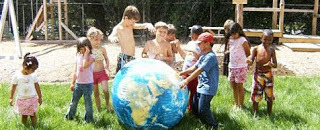
Maharishi School of the Age of Enlightenment, home of pre-school to grade 12 Consciousness-Based Education, has a link on its website titled "School News."
Reading the articles presented provides a look at the richness and depth of the education and activities available to students at Maharishi School.
Here, as a sampling, are five June posts from School News, showcasing the successes of the school and the positive, nurturing qualities that the Transcendental Meditation program brings to education.
Atreya Dey Invited to Present at Water ConferenceMaharishi School Destination ImagiNation Teams Triumph Internationally--AgainNature Explore Classroom Summer CampPoem by Caroline Fulcher Selected for PublicationMaharishi School is Class 1A Tennis Runner-up for Third Straight YearCaroline Fulcher was one of my literature students this last school year, where the study of poetry was part of the curriculum.
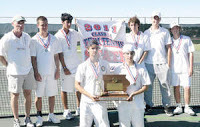 Tennis Coach Lawrence Eyre in 2009 was named the National High School Coach of the Year by the United States Professional Tennis Association. One coach is awarded this honor each year, chosen from all the high schools in the United States, regardless of size. Here is a link where he speaks about his award.
Tennis Coach Lawrence Eyre in 2009 was named the National High School Coach of the Year by the United States Professional Tennis Association. One coach is awarded this honor each year, chosen from all the high schools in the United States, regardless of size. Here is a link where he speaks about his award.Spend some time with Maharishi School's website. It provides a glimpse of the reason why students attend our school.
Copyright 2011 by Thomas L. Kepler, all rights reserved
Published on June 28, 2011 07:49



